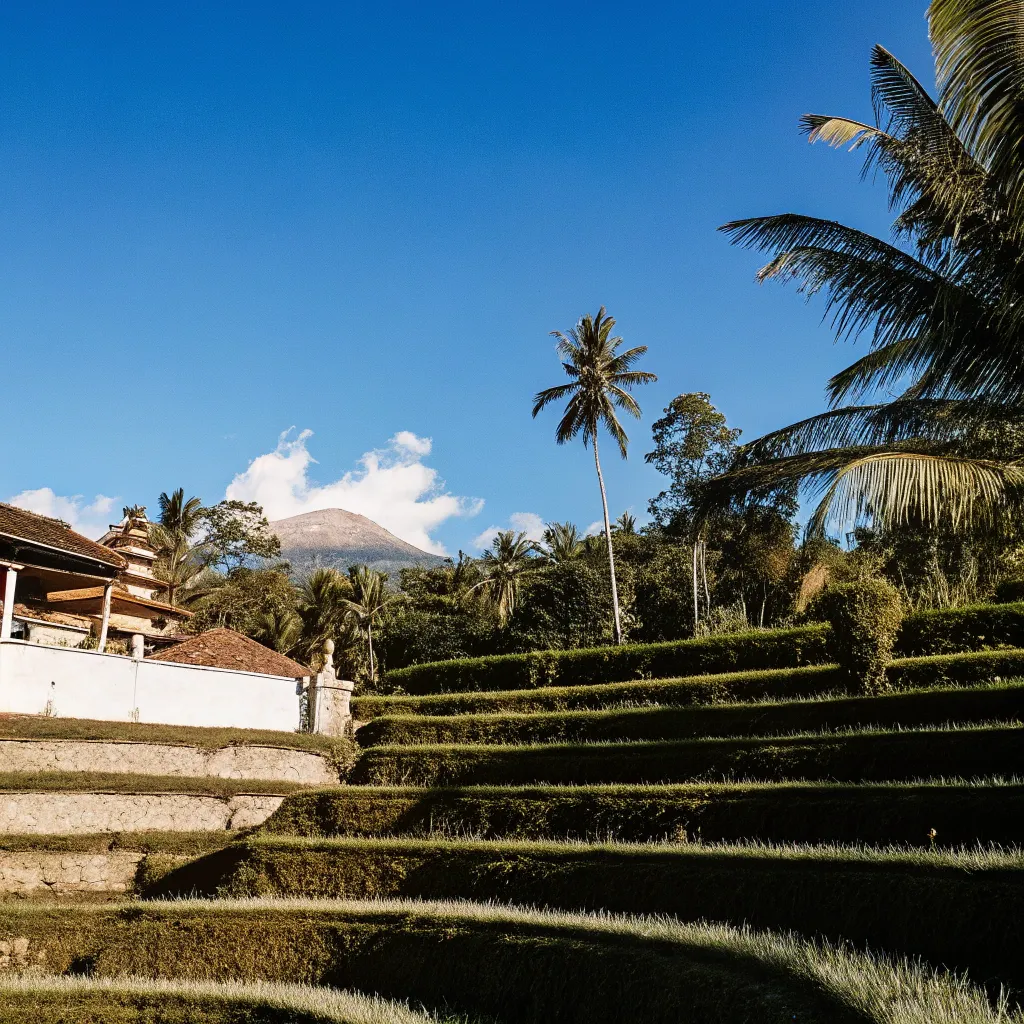Bali, the famed Island of the Gods, draws millions of visitors each year with its pristine beaches, lush rice terraces, and vibrant cultural scene. But beneath the well-trodden tourist paths lies a deeper, more authentic Bali that only reveals itself to those who return time and again. After multiple visits spanning different seasons and regions, I've compiled these insider tips that you won't find in typical guidebooks or first-timer itineraries.
The Art of Timing: When Seasoned Travelers Visit Bali
First-time visitors often flock to Bali during the high season (June-August), creating crowds at popular spots like Kuta Beach and Ubud. Repeat visitors, however, have discovered the sweet spots in Bali's calendar.
The Shoulder Season Sweet Spot
May and September offer the perfect balance of good weather and fewer tourists. The temperatures remain pleasant, averaging 27-29°C (80-84°F), while humidity levels drop compared to peak season. During these months, you'll find:

- Hotel rates dropping by 30-40%
- Significantly shorter queues at major temples
- More attentive service at restaurants and spas
- Easier reservations at popular beach clubs
"I've been coming to Bali every September for the past five years," shares Mark, an Australian expat I met in Canggu. "The weather is nearly identical to July, but I pay half the price for accommodations and never have to wait for a table at my favorite spots."
The Rainy Season Secret
While most tourists avoid November through March, repeat visitors know that the rainy season offers unique advantages:
- Rain typically falls in short, intense afternoon bursts, leaving mornings clear
- The landscape transforms into vibrant shades of green
- Rice terraces reach their most photogenic state
- Cultural ceremonies increase during this period
- Prices drop dramatically, especially for monthly rentals
The trick is to plan indoor activities or spa treatments for the late afternoon and keep mornings free for exploration. Pack a lightweight rain jacket and embrace the occasional shower as part of the experience.
Beyond the Tourist Hubs: Where Repeat Visitors Actually Stay
First-timers gravitate toward Kuta, Seminyak, and Ubud. Repeat visitors, however, have discovered areas that offer more authentic experiences while still providing necessary comforts.
Amed: The Diver's Paradise
This string of fishing villages along Bali's northeastern coast remains refreshingly underdeveloped. The black sand beaches and coral reefs just offshore make it a diver's dream without the crowds of Sanur or Nusa Dua.
What repeat visitors appreciate about Amed:
- Traditional jukung fishing boats dotting the shoreline
- Direct access to world-class dive sites like the USS Liberty shipwreck
- Significantly lower prices than southern Bali
- Stunning sunrise views of Mount Agung
- Small family-run warungs serving the freshest seafood
Sidemen: The New Ubud
As Ubud grows increasingly commercialized, repeat visitors have shifted their attention to Sidemen Valley, about an hour east. This lush region offers the rice terrace views and cultural immersion that initially made Ubud famous, but without the traffic and tourist crowds.
"Sidemen today feels like Ubud did 15 years ago," explains Sarah, who's visited Bali annually since 2008. "You can still find true craftspeople working in their home studios and take walks through rice fields without encountering another tourist."
Pemuteran: Northwest Coast Tranquility
While most visitors to northwest Bali head straight to Lovina for dolphin watching, repeat visitors often prefer Pemuteran. This quiet coastal village offers:
- Bali's largest artificial reef restoration project
- Uncrowded beaches with calm waters
- Proximity to West Bali National Park
- A genuine village atmosphere with minimal tourist infrastructure
- Stunning mountain backdrop
Transportation Hacks Only Regulars Know
First-time visitors to Bali often rely exclusively on taxis or tourist shuttle services. Repeat visitors have developed more efficient systems for getting around.
The Scooter Reality Check
While renting a scooter (around 70,000 IDR/day or $4.50 USD) remains the most flexible option, experienced visitors approach this differently:
- They rent from local shops recommended by their accommodation rather than tourist-facing rental companies
- They negotiate monthly rates (1.5-2 million IDR or $95-125 USD) for significant savings
- They understand which areas to avoid during rush hour (particularly the Canggu shortcut and Sunset Road)
- They use Grab or Gojek for rainy days rather than attempting to drive in downpours
Important safety note: Always wear a helmet and carry an international driving permit. Police checkpoints target tourists, and the standard "fine" ranges from 200,000-300,000 IDR ($13-19 USD).
The GoJek Advantage
Repeat visitors rely heavily on the GoJek app (Indonesia's version of Uber), which offers services beyond just transportation:
- GoRide (motorcycle taxi) for quick, traffic-beating trips
- GoCar for longer journeys or airport transfers
- GoFood for delivery from restaurants that don't otherwise deliver
- GoMart for grocery delivery to your accommodation
"I stopped renting scooters after my second visit," admits Tom, a digital nomad I met in Canggu. "With GoJek, I can get anywhere for a fraction of the cost of taxis, without the stress of navigating or parking."
Where Locals Actually Eat
First-time visitors often stick to restaurants listed on TripAdvisor or recommended by their hotel. Repeat visitors know that the most memorable meals come from:
Warungs Without English Menus
The lack of an English menu often signals authentic local cuisine at local prices. Repeat visitors look for:
- Plastic chairs and simple settings
- Local families dining alongside tourists
- Hand-written menus or food displayed in glass cases
- Prices listed in thousands rather than hundreds of thousands
Warung Mak Beng in Sanur and Warung Babi Guling Pak Malen in Seminyak exemplify these hidden gems, serving signature Balinese dishes for a fraction of resort prices.
Night Markets (Pasar Malam)
Every region in Bali has night markets that come alive after sunset. These markets offer the most authentic and affordable local cuisine:
- Gianyar Night Market for babi guling (suckling pig)
- Kereneng Night Market in Denpasar for seafood
- Sanur Night Market for mixed local specialties
"I've stopped making dinner reservations entirely during my visits," says Lisa, who's been to Bali six times. "Instead, I ask my villa staff which night market is happening that evening and make that my dining destination."
How Do I Get Around the Island?
One question I frequently hear from first-time visitors is about transportation options. While taxis and tour services are abundant, repeat visitors have developed more efficient systems.
Beyond scooters and GoJek mentioned earlier, experienced Bali travelers often:
- Hire a private driver for day trips rather than joining group tours
- Expect to pay 500,000-700,000 IDR ($32-45 USD) for a full day
- Arrange through local contacts rather than hotel concierge for better rates
- Build relationships with reliable drivers and request them directly for future visits
- Use shuttle services between major tourist areas
- Perama operates shuttles between popular destinations for a fraction of private transfer costs
- Kura-Kura Bus provides reliable service around southern Bali
- Consider boat services for coastal journeys
- Fast boats between Bali and the Gili Islands often stop at multiple points along the coast
- Public boats between Padangbai and Nusa Penida offer a budget-friendly alternative to tourist services
Cultural Immersion Beyond Temple Tours
First-time visitors typically follow a checklist of famous temples and cultural shows. Repeat visitors seek deeper cultural connections through:
Lesser-Known Ceremonies
Bali's ceremonial calendar is packed year-round, with most events open to respectful visitors. Repeat visitors:
- Ask local staff about upcoming ceremonies in nearby villages
- Visit temples during odalan (temple anniversary) celebrations rather than on ordinary days
- Participate in community events like banjar cleanings or preparation for Galungan
"My most memorable Bali experience wasn't at Tanah Lot or Uluwatu, but at a small village cremation ceremony my driver invited me to attend," recalls Michael, a five-time visitor. "The family welcomed me, explained the significance of different rituals, and even provided appropriate clothing."
Learning Traditional Crafts
Instead of just buying souvenirs, repeat visitors often participate in:
- Traditional silver jewelry making in Celuk
- Natural dyeing and weaving classes in Sidemen
- Wood carving workshops in Mas
- Traditional painting lessons in Batuan
These experiences typically cost 300,000-500,000 IDR ($19-32 USD) for half-day sessions and provide deeper appreciation for Balinese craftsmanship.
Money-Saving Strategies for Extended Stays
First-time visitors often overpay for everything from accommodations to activities. Repeat visitors employ these strategies:
Long-Term Accommodation Deals
For stays exceeding two weeks:
- Contact properties directly rather than booking through platforms
- Negotiate monthly rates (often 50-60% less than nightly rates)
- Consider villa rentals in residential areas rather than tourist zones
- Look for places offering free motorbike rental with monthly bookings
Local SIM Cards and Banking
Experienced visitors immediately:
- Purchase a Telkomsel SIM card at the airport (100,000 IDR/$6.50 USD for 25GB)
- Use ATMs attached to banks rather than standalone machines to avoid skimming
- Withdraw larger amounts less frequently to minimize international ATM fees
- Use Wise (formerly TransferWise) for better exchange rates on larger expenses
Avoiding Tourist Traps That Locals Never Visit
Repeat visitors have learned to identify and avoid certain overhyped attractions:
The Bali Swing Phenomenon
Those Instagram-famous giant swings charging $35-50 USD for photos? Locals never visit them. Repeat visitors know that:
- Many restaurants and cafes now offer similar swings with no additional charge
- The original concept has been replicated dozens of times, creating environmental concerns
- The experience rarely matches expectations and involves long waits
Overpriced Beach Clubs
While Potato Head and Ku De Ta get all the attention, repeat visitors prefer:
- La Brisa in Canggu for a more relaxed atmosphere
- Sundays Beach Club in Uluwatu for actual beach access
- Single Fin in Uluwatu for sunset views without minimum spend requirements
"Beach clubs are part of the Bali experience," acknowledges Jennifer, who visits annually. "But after my first trip, I realized the most famous ones offer the least value and most crowded experience."
Connecting with Bali's Expat Community
Perhaps the biggest advantage repeat visitors have is connecting with Bali's vibrant expat community, which opens doors to:
- Invitation-only events and gatherings
- Local knowledge about new restaurants and activities
- House-sitting opportunities for future visits
- Authentic local experiences through established networks
Popular ways to connect include:
- Attending yoga classes at studios like The Practice in Canggu
- Working from co-working spaces like Outpost or Tropical Nomad
- Joining Facebook groups like "Bali Expats" or "Canggu Community"
- Participating in beach cleanups and community events
Weather Patterns Only Regulars Understand
Beyond the simple "dry season/rainy season" distinction, repeat visitors understand Bali's microclimate variations:
- Ubud typically receives more rainfall than coastal areas year-round
- The Bukit Peninsula (Uluwatu area) stays drier than the rest of the island
- Eastern Bali (Amed, Candidasa) experiences different weather patterns than the south
- Mount Agung creates a rain shadow effect, making nearby areas unexpectedly dry
This knowledge allows for better planning of activities and accommodation choices throughout the year.
The Bottom Line: Why People Keep Coming Back
What ultimately brings people back to Bali isn't just the beaches or the bargains—it's the connections formed and the deeper understanding of this complex island.
As one Australian expat eloquently explained on a Reddit thread about Bali's appeal: "First-timers see Bali as a destination. Repeat visitors understand it's a relationship—one that evolves and deepens with each visit."
This sentiment echoes across the community of regular visitors who have discovered that Bali reveals itself in layers, with each return trip peeling back another level of understanding and appreciation for this extraordinary island.
Whether you're planning your second visit or your tenth, approaching Bali with openness to experiences beyond the guidebook highlights will transform your journey from a typical vacation into something far more meaningful.
Have you visited Bali multiple times? What insider tips would you add to this list? Share your experiences in the comments below!






